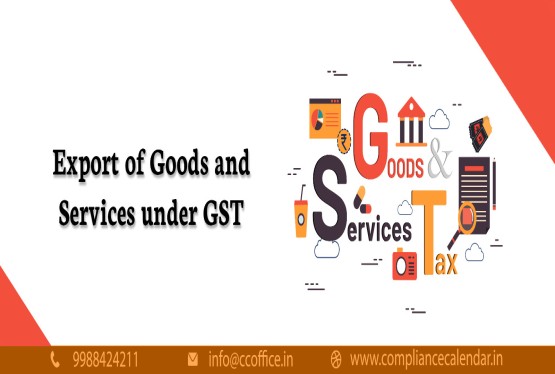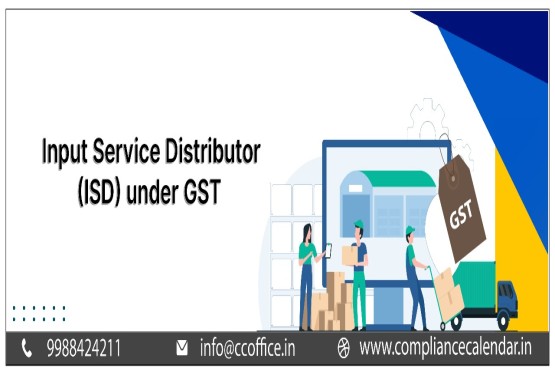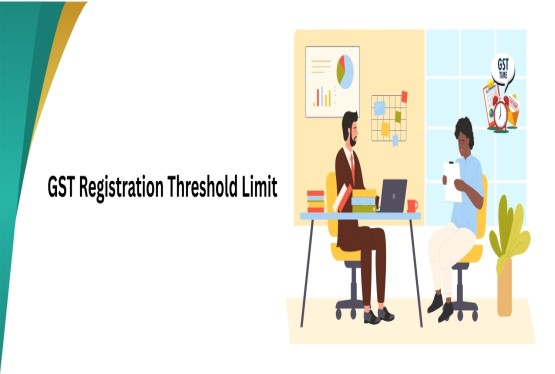Timely filing of GST returns is not just a compliance requirement but a crucial responsibility of every registered taxpayer under the Goods and Services Tax (GST) regime in India. The Government has put in place strict penalties and late fees for non-compliance to ensure regular and proper filing of returns. Two of the most significant returns under GST are GSTR-1 and GSTR-3B. This article explains in detail how to calculate penalties for late filing of these returns, relevant provisions, and recent government updates—everything a taxpayer needs to know to avoid unnecessary fines.
What is GSTR-1 and GSTR-3B?
GSTR-1 – Statement of Outward Supplies
GSTR-1 is a monthly or quarterly return that needs to be filed by registered taxpayers to report outward supplies of goods and services. This includes details of invoices, debit-credit notes, and other sales data. The due date for GSTR-1 is generally the 11th of the following month (for monthly filers) or as notified under the QRMP scheme (for quarterly filers).
GSTR-3B – Summary Return and Tax Payment
GSTR-3B is a self-declared summary return that needs to be filed monthly or quarterly. It includes details of outward supplies, input tax credit claimed, tax liability, and tax paid. It is essentially the return through which taxpayers pay their monthly GST dues. The due date is usually the 20th of the following month, or as applicable under the QRMP scheme.
Legal Provisions for Late Filing Penalty
The penalties and late fees for delay in filing GSTR-1 and GSTR-3B are governed by Section 47 of the CGST Act, 2017. This section lays down the provisions related to late fees and penalties for non-furnishing or delay in furnishing GST returns.
According to Section 47(1):
"Any registered person who fails to furnish the details of outward or inward supplies required under this Act shall pay a late fee of one hundred rupees for every day during which such failure continues."
This means both the Central GST (CGST) and the State GST (SGST) components will be applicable—effectively doubling the amount.
Late Fees for GSTR-1 and GSTR-3B – Current Structure
As per current notifications and updates issued by the Central Board of Indirect Taxes and Customs (CBIC), the late fee is categorized based on the type of taxpayer and the volume of returns.
Late Fee for GSTR-1 (Monthly or Quarterly)
-
Rs.50 per day of delay (Rs.25 CGST + Rs.25 SGST)
-
Rs.20 per day for nil return (Rs.10 CGST + Rs.10 SGST)
-
Capped at Rs.5,000 per return
Late Fee for GSTR-3B (Monthly or Quarterly)
-
Rs.50 per day of delay (Rs.25 CGST + Rs.25 SGST)
-
Rs.20 per day for nil return (Rs.10 CGST + Rs.10 SGST)
-
Capped at Rs.5,000 per return
The late fee is auto-calculated by the GST portal once the return is filed after the due date.
Penalty for Non-Filing of GSTR-3B
While late fee is a fixed daily amount, penalty comes into play when a taxpayer fails to file the return entirely. If a registered taxpayer does not file GSTR-3B for a continuous period, they may also face additional consequences:
-
Blocking of E-Way Bill generation
-
Suspension of GSTIN under Rule 21A
-
Show-cause notice under Section 46 of the CGST Act
-
Recovery proceedings under Section 79, which may include attachment of bank accounts or properties
Hence, the cost of non-filing is much more than the monetary late fee—it affects the functioning and legal standing of your business.
Calculation of Late Fee with Example
Let us understand the calculation of late fees for both GSTR-1 and GSTR-3B through a practical example.
Example:
A taxpayer was required to file GSTR-3B for the month of March 2025 by 20th April 2025, but the return was filed on 30th April 2025.
-
Delay = 10 days
-
Applicable late fee (if tax liability exists) = Rs.50/day
So,
Late Fee = 10 days × Rs.50 = Rs.500
(Rs.250 CGST + Rs.250 SGST)
If the taxpayer had no sales or purchases (i.e., NIL return), the late fee would be:
Late Fee = 10 days × Rs.20 = Rs.200
(Rs.100 CGST + Rs.100 SGST)
The GST portal will auto-populate the total late fee, and it must be paid before filing the return.
Is Interest Also Payable?
Yes, in addition to late fees, interest at 18% per annum is also applicable on the tax amount due. Interest is calculated from the day after the due date to the actual date of payment.
Formula for Interest Calculation:
Interest = Tax amount × 18% × (No. of days delayed) / 365
Example:
If the tax payable is Rs.1,00,000 and the delay is 10 days:
Interest = Rs.1,00,000 × 18% × 10/365 = Rs.493.15 (approx.)
The interest is not auto-populated by the GST portal and must be calculated and paid manually.
Consequences of Repeated Non-Filing
If GSTR-3B or GSTR-1 is consistently not filed:
-
GSTIN may get suspended under Rule 21A of the CGST Rules
-
Input Tax Credit (ITC) to recipients may get blocked
-
Suppliers may be disallowed to pass ITC
-
Business operations can get disrupted due to compliance risk
-
Notices and audits may be initiated
Timely filing avoids these hassles and keeps the compliance record clean.
Late Fee Amnesty Scheme by Government
In the past, the government has introduced late fee amnesty schemes to support small taxpayers. These schemes reduce or waive late fees for old pending returns if filed within a specific window.
For example, in 2021, the government capped late fees for pending returns from July 2017 to April 2021 to:
-
Rs.500 (Rs.250 CGST + Rs.250 SGST) for NIL returns
-
Rs.1,000 (Rs.500 CGST + Rs.500 SGST) for other cases
Although these were limited-time offers, they provided huge relief to defaulters.
Such schemes may not be available always, hence timely filing should be the priority.
Can Late Fees Be Waived?
Late fees cannot be waived or reduced by the taxpayer. However, the government may issue a notification under Section 128 of the CGST Act to reduce or waive the amount either completely or conditionally.
For instance, late fees have been reduced for NIL filers and small taxpayers in the QRMP scheme. These changes are notified from time to time and must be tracked regularly.
Best Practices to Avoid Late Fees
To avoid penalties and ensure smooth compliance, follow these best practices:
-
Set Calendar Alerts: Always mark due dates and keep alerts on digital calendars.
-
Use Automation Tools: Use GST software or online portals that remind you before deadlines.
-
Ensure Reconciliation: Match purchase and sales data monthly to avoid last-minute corrections.
-
File NIL Returns Promptly: Even if there are no transactions, file your NIL GSTR-3B to avoid Rs.20/day late fee.
-
Check Portal for Notices: Log in regularly to the GST portal to check for any show-cause notices or system-generated alerts.
Conclusion
It is important to know how to calculate penalties and late fees for GSTR-1 and GSTR-3B for every GST-registered business. While the amounts may seem small at first, they add up quickly and can impact your compliance rating and operational flow. Regular monitoring, timely return filing, and awareness of current provisions under the CGST Act can help avoid these unnecessary costs. Always consult a GST practitioner or Chartered Accountant for advice on complex scenarios or large-value transactions.
If you want any help in GSTR-1 and GSTR-3B filing or want to pay the penalty for late filing then you can connect with Compliance Calendar’s GST experts through email info@ccoffice.in or Call/Whatsapp at +91 9988424211.
FAQs on Late Filing Penalties
Q1. What is the maximum late fee for GSTR-3B?
Ans. The late fee is capped at Rs.5,000 per return (Rs.2,500 CGST + Rs.2,500 SGST).
Q2. Is there any late fee for GSTR-1 under NIL return?
Ans. Yes, it is Rs.20 per day (Rs.10 CGST + Rs.10 SGST), capped at Rs.500.
Q3. Can interest be waived under any circumstances?
Ans. No, interest for late payment of tax cannot be waived. It is a statutory liability.
Q4. Is there a difference in penalty for monthly and quarterly filers?
Ans. The late fee structure is the same, but due dates differ under the QRMP scheme.
Q5. Can I file GSTR-1 if GSTR-3B is not filed?
Ans. In some cases, the portal restricts GSTR-1 filing if the previous GSTR-3B is pending.









_crop10_thumb.jpg)


















































































_for_FY_2025-26_crop10_thumb.jpg)












_learn_crop10_thumb.jpg)








_Filing_Due_Dates_for_FY_2024-25_learn_crop10_thumb.jpeg)



























